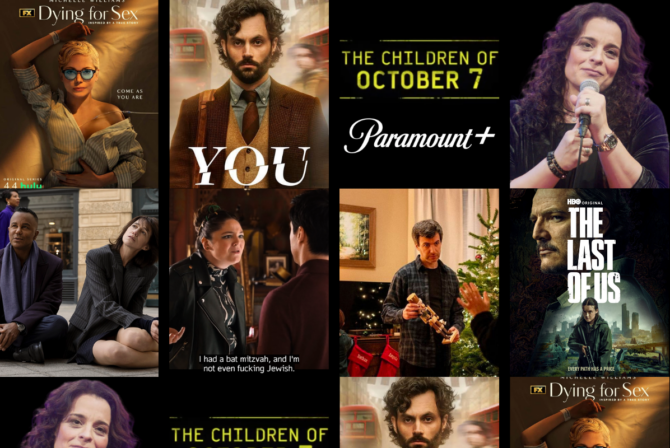“The Handmaid’s Tale” has garnered a tremendous amount of attention since it aired at the end of April this year. Many critics have rightly praised the show for exploring the nuances of sexism, womanhood, and the realities (and potential realities) that show portrays about society controlling women and their bodies.
The show, however, is complicated: it should neither be lauded as the “best feminist show” on air right now–or a male-gaze torture-fest masquerading as feminist, as other writers have noted.
While many people, including myself, immediately saw the show and cringed because it feels all too real during the Trumpcare debate and the war on reproductive rights (hello, preexisting conditions like C-sections, postpartum depression, rape, etc., not to mention Planned Parenthood already closing in places like Iowa). It is also remiss not to mention that the show, which is based off the dystopian book of the same name by Margaret Atwood (think “1984” but about women), is already a reality for women living under Saudi Arabia’s guardianship system.
And yet, despite the timeliness of the show, many women don’t want to tune in, as Kveller editor Sarah Seltzer rightly explored. Sarah points out that many of the scenes are shot, perhaps unintentionally, for the male gaze–and I agree both as a feminist, and as a rape survivor.
Offred’s rape scenes, for instance, are always shot from above, from the man’s perspective–(literally, as we see Waterford’s perspective looking down at Offred). What is this trying to show us as the audience? What are we supposed to gain, other than being uncomfortable and potentially triggered for the millionth time since all the rape scenes ever (hi, “Game of Thrones”)?
Why, for example, could the scene not be shot from Offred’s perspective looking up–or even from Serena Joy’s perspective and looking down at Offred and then up to her husband. We do see Serena Joy’s eyes up well with tears, but again, it’s from the male perspective. In this way, the show isn’t portraying Offred’s with the strong feminist hand I hoped for.
However, for me, the show remains worth watching and discussing, especially for the way it portrays how women (or any oppressed group) treat each other in traumatic situations. In Gilead, the women police each other, more than their Commanders. From the get go, for instance, Offred is told to stay silent by Aunt Lydia, who instructs the handmaids that their lives will be hard, but lived for the greater good. Because women should sacrifice themselves, be the martyrs and mothers of the world.
Serena Joy, the Commander’s wife, is one of the more interesting characters–her story illustrates how her own experience being marginalized also makes her the abuser of women like Offred, women are in a social and economic class below her. Many have pointed out that Serena Joy echoes what is happening right now, seen by women like Ivanka Trump and Kellyanne Conway.
In Gilead, women are pitted against each other in order not to be the one who is sacrificed. In this way, Janine, whose eye was taken out as a punishment, is a symbolic counterpart to Serena Joy–because while Janine can’t see out of one eye, Serena turns a blind eye to the men who are the abusers (like the Commanders) and who are complacent around her.
As the antagonist to Offred, Serena Joy illustrates the complicated nature of a woman who supports the patriarchy, who supports abuse, and who does not help her fellow sister—she suffers, too. Like Kellyanne Conway, she corrupts feminist language in a way to control, not to free–Serena Joy once wrote a book about how women left their families for jobs, and praised “domestic femininity” as a way to save the world.
She wanted to write another book about “fertility as a national resource, reproduction as a moral imperative,” which is really just a way to control women’s bodies by saying it’s for the greater good.
But the way women are pitted against each other isn’t just about the high-ranking wives. The cycle of abuse is perpetuated even amongst the handmaids (because we all will use what little power we have. When Janine/Ofwarren has a breakdown, the other handmaids mostly watch and tell her to “pull herself together” so she doesn’t get them all in trouble. Most of the other handmaids merely talk about shopping and the weather, because everyone is too afraid of being “caught” or “sold out” to the wives. Ofglen is the only one who tries to rebel–and (spoiler alert) she ends up being rewarded by being caught and brutally tortured.
So, really, what better time to watch a show when feminism is being subverted before our very eyes, turned into something subservient and complicit? And really, even in less traumatic situations (like fighting for abortions and maternity leave), this show is a call to action for women to support each other in a daily basis, like at work, or when looking at the way other women parent, express sexuality and gender, or even dress. Because even the way women are routinely treated on social media could stand to change, as Atwood pointed out in an article recently:
“Yes, women will gang up on other women. Yes, they will accuse others to keep themselves off the hook: We see that very publicly in the age of social media, which enables group swarmings.”
Sheryl Sandberg is one of many current leaders who encourages to support other women, which is not a bad idea when applied to every aspect of someone’s life, not just careers. Shaming each other for choices, “The Handmaid’s Tale” suggests, could be perverted into something a lot more frightening. And yet the show reminds us that empowering ourselves, and each other, can save the world. Power doesn’t have to be an ugly word when used the right way: collectively (think Women’s Marches).
In a recent piece in the New York Times, Atwood said, “It can’t happen here” could not be depended on: Anything could happen anywhere, given the circumstances.” Yes, if women and other oppressed groups refuse to be turned against each other, we can avoid the worst circumstances, but that requires the kind of extraordinary courage we have yet to see on a wider scale.







